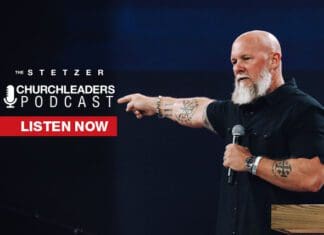One of the characteristics that journalists and ministers have in common is that we’re called not to make the story about us, which is why, as a Black man, writing about the riots and racial injustice in America is difficult. I have the privilege of wearing two hats in my career calling as a minister and journalist. There is a specific subject matter that needs to be shared when I wear my journalist hat, and there is a specific story of a Savior that needs to be shared when I wear my minister hat.
But the protests across our nation moved me to leave my house in Kennesaw, Georgia, and venture into the heart of Atlanta where riots were occurring. I wanted to learn why people, mainly those belonging to Generation Z, decided to riot and loot after what began as a peaceful protest about justice for George Floyd, a Black man who died after a White Minneapolis police officer pinned him down by his neck for several minutes. To be clear, I don’t think we should ever put ourselves in jeopardy, but I was compelled to better understand and connect with a hurting generation.
What I Learned About Gen Z From the Atlanta Riot
As a result of my experience that evening, I have uncovered seven distinct characteristics of this younger generation and how we should engage with them:
- A Collective “I Can’t Breathe”: The book of Genesis ends on a high note for God’s people. Yet when we turn the page to the book of Exodus, it is clear that things have changed. Exodus 1:8 makes it known that a new generation knew nothing of Joseph and the God he served. Generational shift doesn’t always bring along the knowledge of past generations, nor the understanding of a new generation.

In speaking with some of the people during the Atlanta riot, it became obvious to me that they were hurting and wanted to be heard. I in no way condone violence, but we have to realize that in order to minister to this generation, we have to acknowledge and empathize with their hurt. This past week we all witnessed another life being brutally taken on social media and national TV. That is a lot to take in for a lot of people, and when a group of people is wounded, they may act out in hurtful ways.
We must give them room to react.
- Unheard: When I left my house late that Friday night with my friend and security guard Reggie Fields, I asked the Lord to allow me to hear what people were saying. I’ve never been a part of a riot before. I will always remember the screaming, yelling, gunfire, and the sirens which are now forever etched in my mind.
When I asked why they were doing what they were doing, for many, it was to be heard. Although the protest began as an effort to seek justice after the tragic in-custody death of George Floyd, protestors are also working to fight for overarching racial justice and equality.
We must listen first—and listen a lot.
- Anger: You don’t go from a peaceful protest to a full-blown riot without present anger. New mental health concerns, suicides, unknown futures, and myriad voices telling them what to believe is seemingly awakening a generation that is already angry. When I asked a young woman why she was acting out she yelled back, “I’m just angry.” I could see it in her eyes and demeanor.
As politics bleeds into our calling as believers, and our posture on positions can cause the best of us to be frustrated or lash out, peace bridges barriers and communication gaps.
We must remain calm.
- Entitlement: If anger is the mixture that breeds rioting, then entitlement is the mixture that spawns looting. As Cassandra ran toward me with a few boxes of stolen Jimmy Choo shoes in her hands, I asked her why she was stealing the shoes. She yelled back, “These are my shoes.”
It hit me that some of the looters thought that what they were stealing was actually theirs. Somewhere their perspective of life allows them to believe that looting was the answer and okay to do because there was some debt to be repaid to them.














